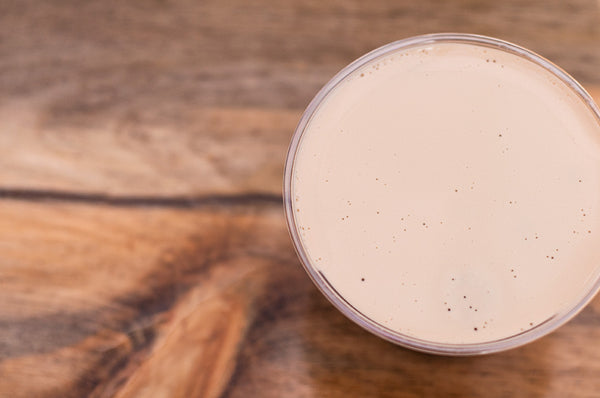
We've been selling draft nitro coffee for two years now, and with this added experience we decided to update our very popular blog post on the subject. Here's the original, where we cover more theory about what makes a good nitro coffee.
We are up to around 10 gallons per week and have changed up our flash-chilling method. Instead of the immediate chill coming out of the brewer, we now brew into regular airpots and transfer the coffee from those into the keg. The previous coil-design was using too much ice and was a bit leaky. It was a great protype for a custom all-stainless solution, which we may look at again in the future. In the meantime, this method works very well.
The keg is now immersed in a large plastic bin with a circulating pump. As we add coffee, we raise the level of the immersion bath, and occasionally add ice or saline bags that we've frozen. In between adding batches of hot coffee we seal the keg up. We use corny kegs.

Once the keg is filled -- 18L total off our two-headed Fetco @3L per batch -- we purge the air and replace with nitrogen, and give it another 20 minutes or so in the water bath. We then pressurize the keg, give it a good shake, and finish conditioning in the fridge for about 18 hours.
When following the rest of the instructions in the original post, what comes out of the tap is just as tasty, maybe a bit better even. It's a very consistent process, and we hit our target TDS of 1.55 with very little variation. The cascade and head are just as strong, and we are looking at around a 2 week lifespan for the keg (we need to do a little more thorough observation on this).
We continue to observe that high-acid coffees tend to present themselves a bit better. That said, our Sweetwater Blend has been consistently good all Summer long and sees strong sales. We target it around a medium profile with maximum sweetness. Our favorites have been our Ethiopia Guji Uraga with its very complex flavors, and the Colombia Celia Congrejo which comes off with a very punchy acidity similar to a peach lemonade.
As always, feel free to contact us if you want to talk about your nitro project!
